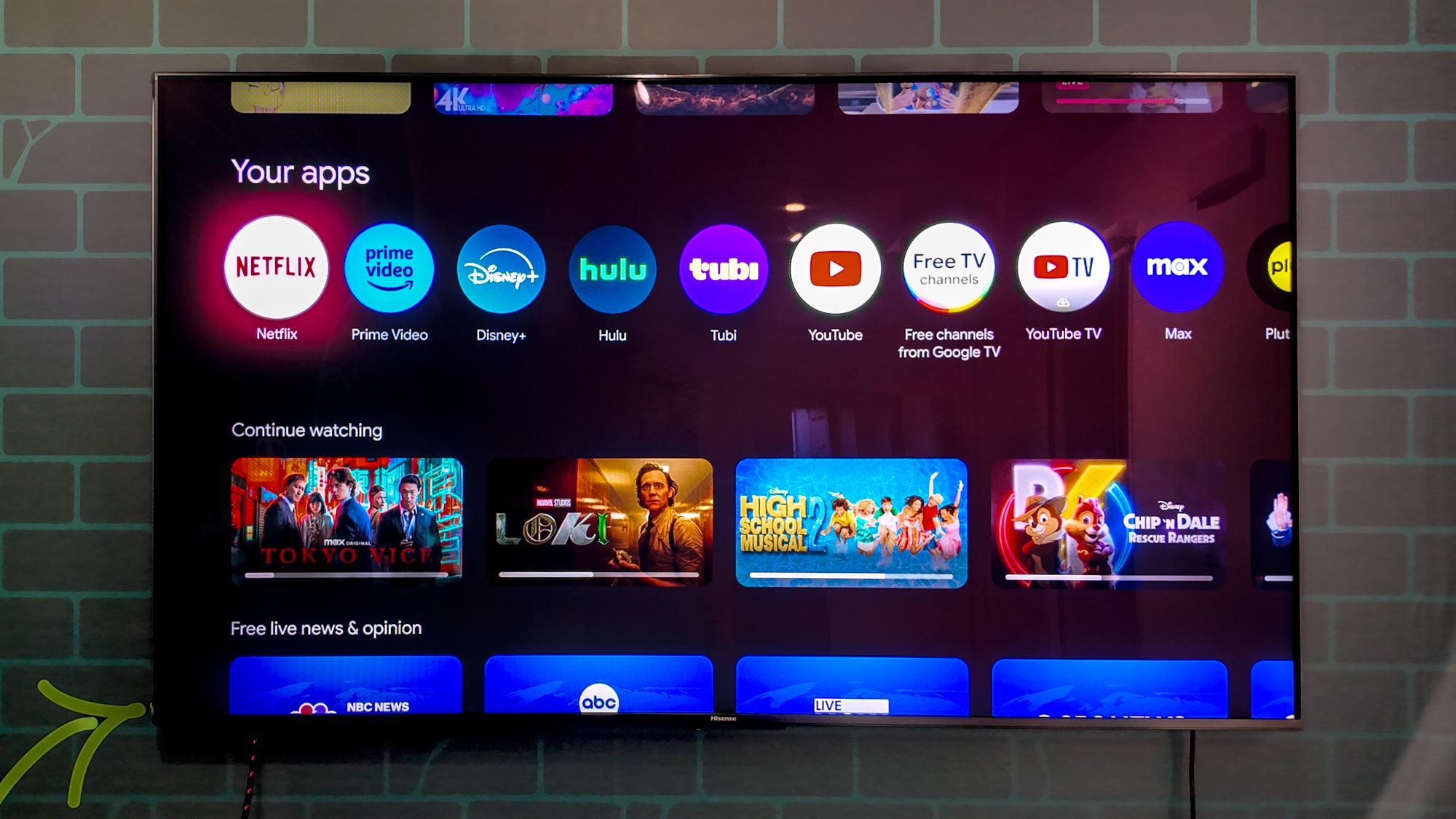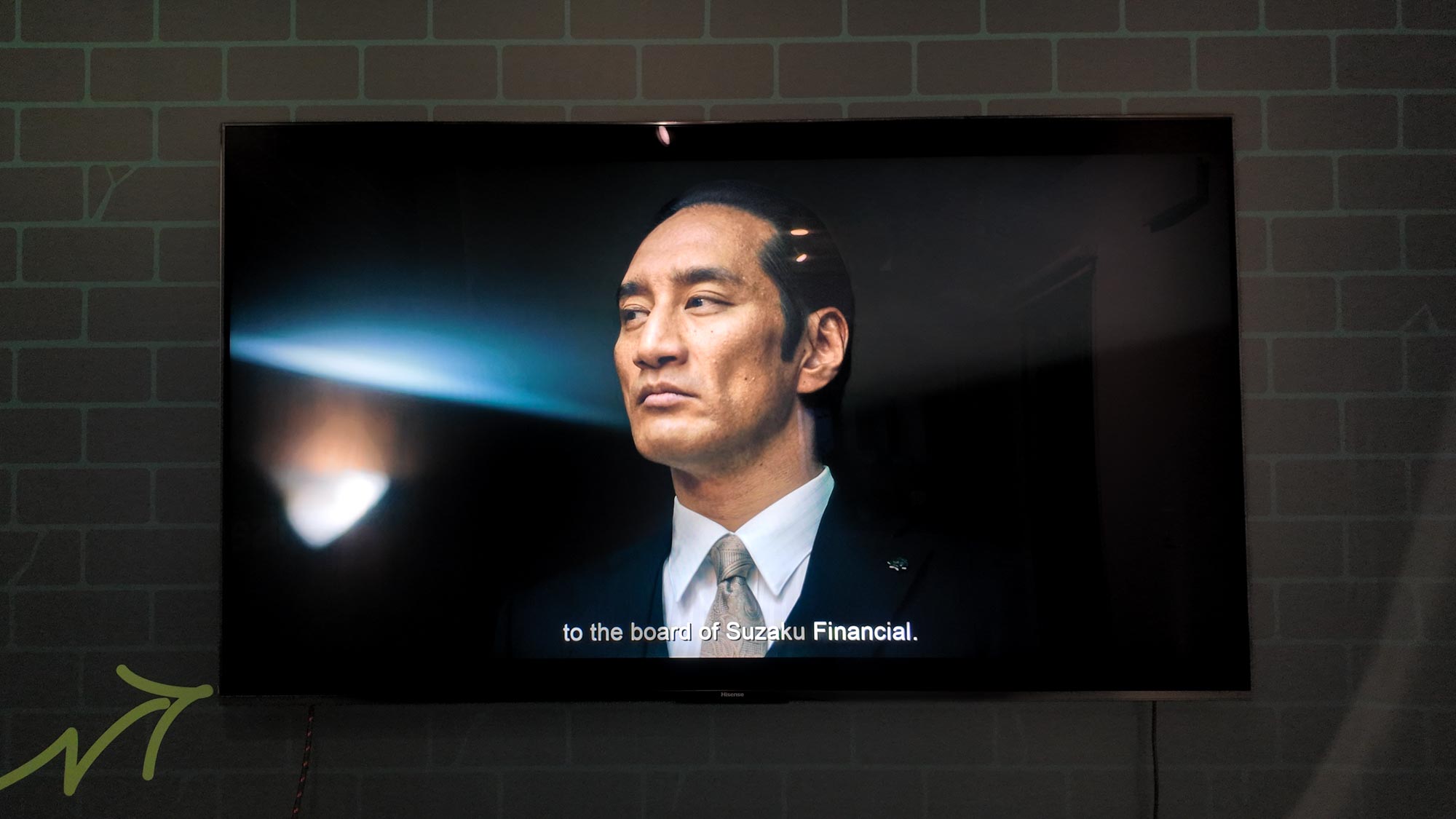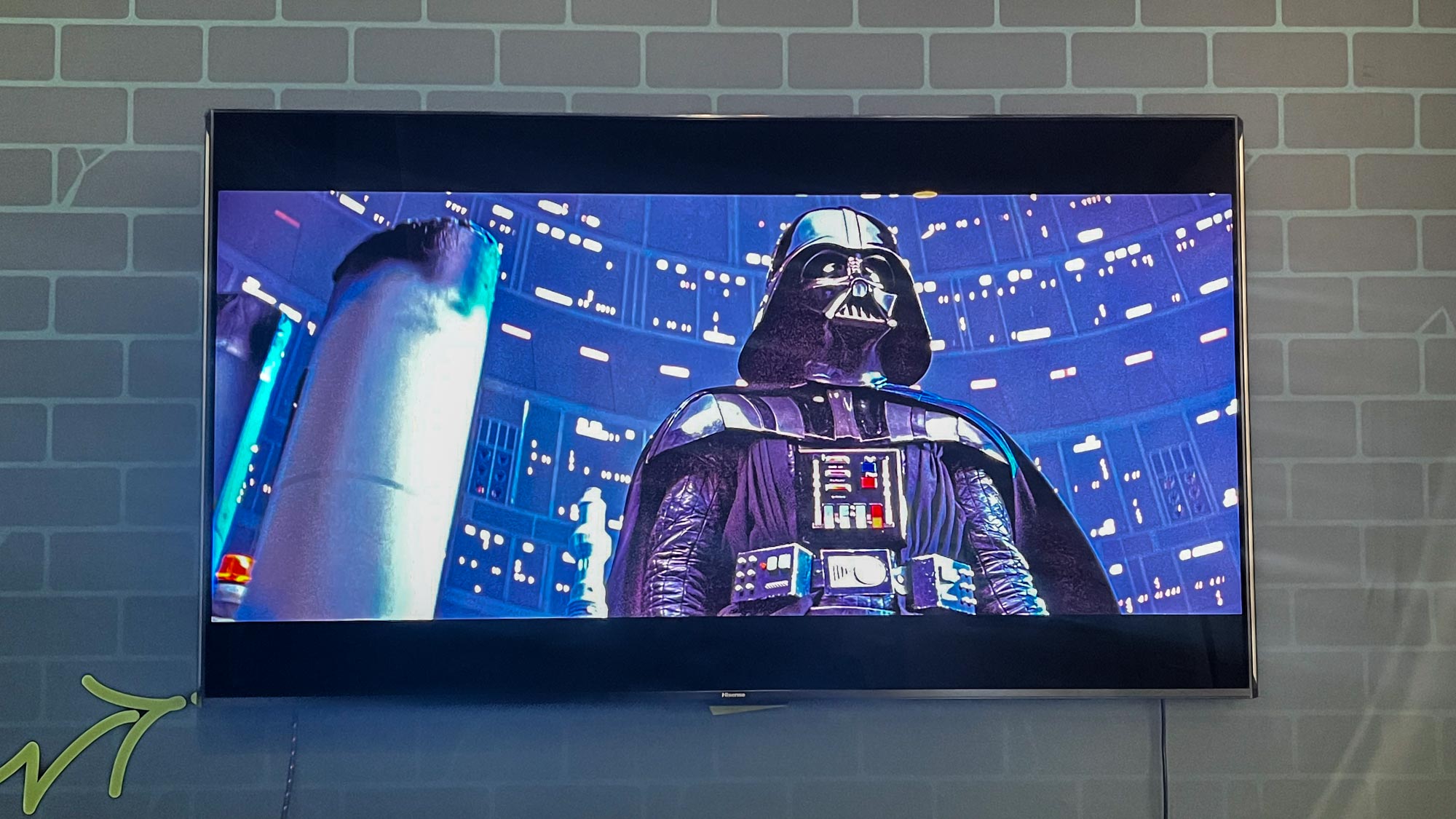Early Verdict
The Hisense U9N Mini-LED TV stuns with gorgeous color, incredibly high brightness, and bone-shaking audio. It's a tad expensive, but fits well between the Hisense UX lineup and the U8N as a more premium offering with tons of screen real estate for those looking to capture a larger-than-life image.
Pros
- +
Bombastic sound
- +
Gorgeous color vibrancy
- +
Crazy-high brightness
Cons
- -
High input lag for price
- -
Screen is a bit reflective
- -
Pricey for a 75-inch TV
Why you can trust Tom's Guide
Hisense is bringing the brightness this year with its 2024 TV lineup, and the brand-new Hisense U9N Mini-LED TV is the shining beacon of that commitment.
After putting it through its paces at a launch event in New York this past week, the U9N Mini-LED TV could prove to be among the best TVs to launch this year. It leverages the new Hi-View Engine X processor and a purported 5,000 nits of peak brightness on a Mini-LED panel with 5,300 local dimming zones.
The problem? It's not cheap. Starting at $2,999 for its 75-inch model, the Hisense U9N Mini-LED TV is pricey compared to the middle-of-the-range Hisense U8N, but it's cheaper than similar-specced TVs from Samsung and Sony. That said, if you want to go even bigger with a Hisense TV, there's always the behemoth Hisense UX Mini-LED TV that comes in both 98-inch and 110-inch screen sizes.
Although it's not as cheap as the Hisense U8N or value-centric U7N, the U9N Mini-LED TV raises the bar for performance and sets the stage for an exciting year in display innovation. Let’s take a look at what you can expect out of Hisense’s newest offering.
Hisense U9N Mini-LED TV: Price and availability
The Hisense U9N Mini-LED TV will only come in two sizes, which includes a 75-inch and an 85-inch version that will cost $2,999 and $3,999, respectively. Both are tipped for release in Summer 2024 and can be purchased at both Best Buy and Amazon upon official launch.
With no previous year iteration in the form of a U9K, it’s hard to compare the new U9N to prior offerings, but it boasts some serious firepower against its closest offshoot in the Hisense U8N Mini-LED TV, which is priced at $1,999 for its 75-inch model. Given that there's a $1,000 price difference between them, the U9N could be a tough upsell, but from what I've seen so far, I think it's worth paying a premium for.
Against the Samsung S95D OLED TV, which starts at $2,599 for its 55-inch model, the U9N feels like a bargain. The Hisense U9N Mini-LED might not come cheap, but definitely comes cheaper than rival high-end displays — especially at that size.
Get instant access to breaking news, the hottest reviews, great deals and helpful tips.
In the case of Sony’s 2024 TV lineup, the Hisense U9N at 85-inch mirrors the price of the 75-inch Sony Bravia 9 at $3,999. It will be interesting to see how these two Mini-LED TVs stack up once we get our hands on them officially.
Hisense U9N Mini-LED TV: Design

Mirroring its UX counterpart, the Hisense U9N Mini-LED TV is a bit bulkier than most flat screen 4K TVs. This is due in large part to its side-firing speakers that boast expansive sound with clear dialogue. After testing for several hours, I have to admit this might be one of the best-sounding TVs I’ve experienced yet, which means you may not need one of the best soundbars for the U9N.
Audio-wise, the U9N uses a 4.1.2 Dolby Atmos speaker that Hisense has dubbed CineStage X surround sound. On the 85-inch model, the U9N packs up to 82 watts of power behind it, which is more than enough for most environments and may make it one of the best 85-inch TVs yet.
The U9N is built on an aluminum frame that supports a LCD panel with Mini-LED technology, which boasts as much as 5,300 local dimming zones for impeccable backlighting coverage. For perspective, the Hisense U8K Mini-LED TV uses all but a mere 1,000 local dimming zones, which means that the U9N shouldn't have as much light bleed or haloing when watching HDR shows and movies.

The U9N runs on Google TV, which offers one of the best interfaces on the block. During my testing, I didn’t run into any issues and found it ran smoothly. You can also expect support for Dolby Vision, IMAX Enhanced, and HDR10+ to round out the U9N’s underlying technologies.
Another thing I loved about the U9N's design is its wide-viewing angle technology that is helped, in part, due to the U9N's anti-glare coating. Unfortunately, the anti-glare filter didn’t work all-too well in our testing environment, as some reflections still did grace the screen, but the ultra-wide viewing angle feature allowed me to move around the room without the TV losing color saturation.
Hisense U9N Mini-LED TV: Performance
Hisense made bold claims with the U9N and its brightness, advertising a 5,000 peak nits that could easily decimate the competition. Our tests currently showed the U9N can hit around 3,952 nits in HDR content in a 10% window, which doesn’t necessarily mean the manufacturer is being disingenuous — rather there could be other factors to consider, namely specific settings and procedures to get to that 5,000 nits.
Besides the brightness, the other highlights of this display are its gorgeous color and sound output. I played a bit of the new “X-Men ‘97” to get a taste of its color, which by our calculations covers 82.08% of the Rec2020 color gamut. Its Delta-E score, which measures accuracy, came in at 1.6584, which puts the U9N among the best TVs we've seen so far in 2024. I also didn’t have to turn the volume higher than 20 (out of 100), otherwise the entire block might hear the all-too familiar X-Men theme music.

I popped in a Blu-ray of “The King’s Man,” which did not disappoint. Of course, you’ll have to shut off the motion smoothing setting in order to get the best performance out of action sequences, but I enjoyed the quality — despite the experience being slightly marred by the U9N’s rather poor handling of reflections.
I didn’t have a gaming console or handheld PC to test the U9N’s overall performance, but judging by its 15ms of input latency, it should be serviceable for most gamers. Ideally, we'd like to see that under the 10ms mark — especially for those running one of the best gaming PCs — but the U9N still has AMD FreeSync Premium Pro and VRR on a native 144Hz display. That’s more than enough coverage for most.
Hisense U9N Mini-LED TV: Outlook

Although our testing data didn't quite reach the advertised 5,000 peak brightness, I’m still left in awe with the Hisense U9N Mini-LED TV. It might not be the most budget-friendly option in its 2024 TV lineup, nor am I too keen on the ever-growing market of larger-size TVs, but I find the U9N serves as one of the best new home entertainment upgrades.
It has some issues with glare despite its higher brightness and doesn’t have the highest input lag that most gamers might expect, but if you’re in the market for one of the best 75-inch TVs this year, the Hisense U9N Mini-LED TV might be the optimal choice due in large part to its sound and lower price against the competition.
More from Tom's Guide
- Forget LG C4 OLED — this new Samsung OLED TV is a way cheaper alternative
- I just reviewed the Hisense U7K Mini-LED TV — and it’s amazing for under $800
- Forget OLED TVs — this new triple-laser projector can beam a 150-inch picture with 3,000 lumens of brightness

Ryan Epps is a Staff Writer under the TV/AV section at Tom's Guide focusing on TVs and projectors. When not researching PHOLEDs and writing about the next major innovation in the projector space, he's consuming random anime from the 90's, playing Dark Souls 3 again, or reading yet another Haruki Murakami novel.
